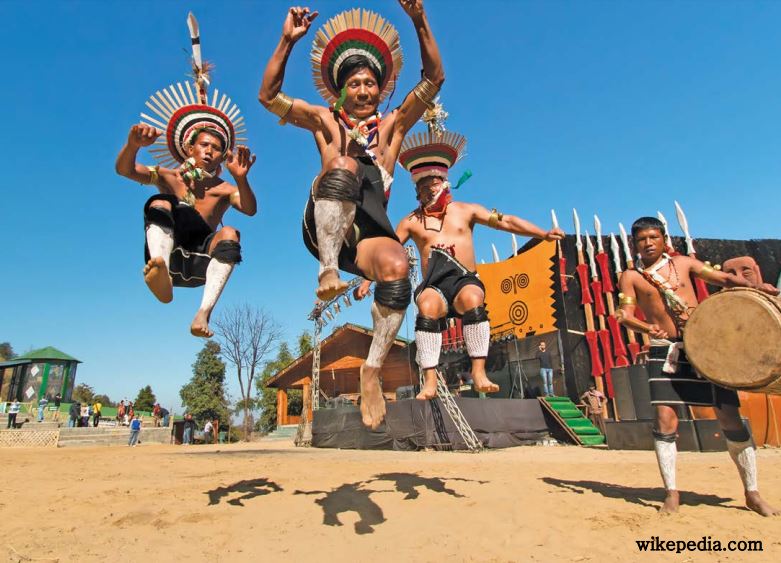The post WHERE THE MOUNTAINS ECHO appeared first on FWD Life | The Premium Lifestyle Magazine |.
]]>As a music lover, and an avid traveller, I try to experience the musical aspects of the places I visit. Recently, I took a trip to the north and north-east parts of India, aiming to explore and engage in that region’s local melodies.
Monasteries of Ladakh
Have you heard of a singing bowl? I first heard them in the beautiful landscapes of Ladakh, where the winds whisper chilled secrets and the Zanskar river flows mellifluously through the Trans-Himalayas. Nature here is soft, incessant and capable of moving anyone to tears with their sweet symphonies. When in Ladakh, walk into any one of the Gompas or a Buddhist temple, to be mesmerised by the soft, stirring hum of the ‘Singing Bowl.’ The sound resonates across a dimly-lit room and will invoke a zen-like state of mind, with the mind merging with the resonance.
The monks, deep in meditation, is levitated by the resonance that the humming creates. The music was originating from the direction of two monks, who were sitting cross-legged, with their singing bowls – softly stirring a short rod around its rim, to make it sing. Getting a singing bowl to sing is an art. You require the knack to tap it just right on the rim, and then stir the originating sound rhythmically. The reverberations ensuing from the bowl mesmerises those who hear it, nudging them into a gentle meditative state with its hum. In high contrast to the singing bowls, is the Tibetan Horn, which is used by Gompa residents as a cry for prayer to gather the monk community. The horn’s powerful sounds reverberates across the vast silence of the mountainside.
The Wangala Festival of Meghalaya

As I made my way downstairs and across the fertile plains of India and crossed the north-eastern neck to Meghalaya, I was greeted with another distinct style of music – that of reed instruments and percussion drums dolling out rhythm in waves. I was in time to witness the Wangala Festival. It is a post-harvest winter festival, denoting the end of the farming season, celebrated by the Garo tribe, also a platform where Meghalaya’s music gets a boost. This annual gathering of tribes is hosted in Asananggre, near Tura. It awakens and energises the entire region, which also imparted much of that positivity into me. The days are filled with dance, music, and traditional games in which the locals wholeheartedly take part.
Festival of Native Instruments
The Garo tribals flock towards the locality, bringing along their ching rings, serenades, buffalo horns and flutes. The festivities are a treat to watch. The village chief, called as the Nokma, performs the day’s rituals with freshly-brewed beer, cooked rice and vegetables that are offered as an appeasement to the gods. The highlight of the festival is, of course, the music. The drums and flutes can put any orchestra to shame with their precision and melody, and they kick up a fabulous mood that even the spectators pick up on. The dancers, young and old, with their colourful attire, headgear (called do’me) and effortless moves sways to the beat of the instruments.
Charm of Buffallo Horns
What particularly stands out from among the festive music is the melody of the buffalo horns. The use of these instruments date back to ancient times, and their notes is enthralling putting listeners into a musical reverie. After the serenade of the horns, a contingent of 30 dancers with 10 drums performs a mesmerising routine, earning the festival a reputation as the ‘100 Drums Festival’. It is performed on the last day, with the tribals dressed in their traditional attire. Hornbill Festival of Nagaland .The north-east is a favoured destination of mine, especially during the winter months when the states are busy with cultural festivals that pay tribute to the land. Stepping out of the Wangala Festival reminds me of the famous Hornbill Festival of Nagaland.
Tribute To The Hornbill
The annual extravaganza happens in the first week of December in Kohima, Nagaland, and I make it a point to reach there a day in advance to catch the fever of festival eve. As is evident from the name, the festival pays tribute to the hornbill, a bird that enjoys spotlight in many of the tribal folklores in Nagaland. I make it a point to never miss the arrival of the Naga tribes, announcing it with war cries and warrior drums. I can feel the pulsating drum beats in my chest, with their rhythmic movements.
Unique in Variety
Each tribe has their own unique attire, distinguished by headgears, multicoloured and ceremonial dressing – which is fascinating! They each speak of their own stories and heroic lore that have been handed down through the generations. The vibrant colours, headgear and ivory armlets all lend a sense of mysticism to the festival that cannot be found anywhere else. Ancient Naga songs pervade over the whole atmosphere, blending the past with the present, enriching the onlookers with information passed on through mouth, from one generation to another.
Faraway Melodies
The mountains and the faraway regions like Meghalaya and Nagaland have their very own music emanating from nature. These soul-stirring melodies are to be experienced firsthand, to learn and absorb, rather than having to read about it. My search for the unknown has led me to these places, gifting me with music born from centuries of culture, music that I can cherish even in the farthest corners of the world.
Words by Satish V Photographs from Various Sources
The post WHERE THE MOUNTAINS ECHO appeared first on FWD Life | The Premium Lifestyle Magazine |.
]]>